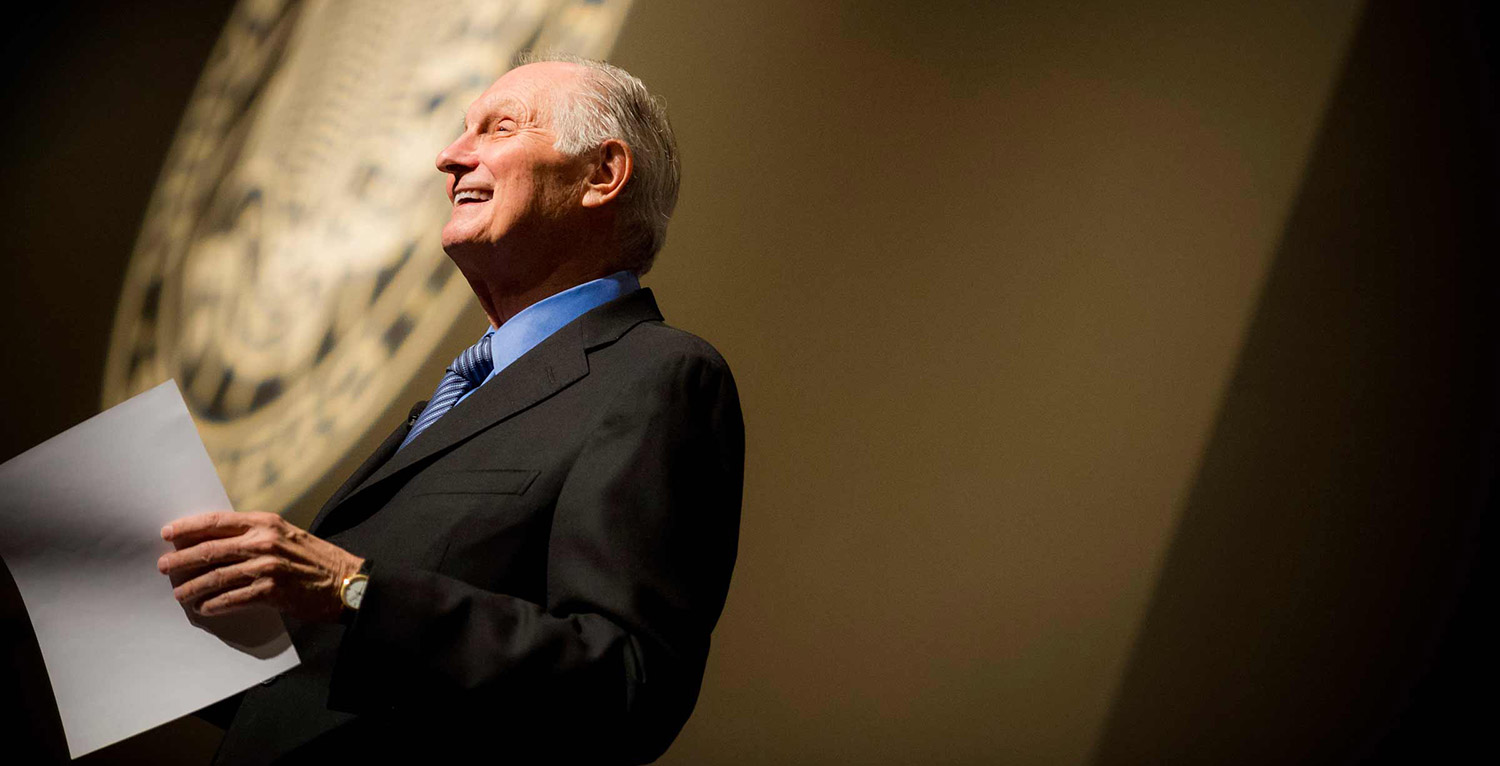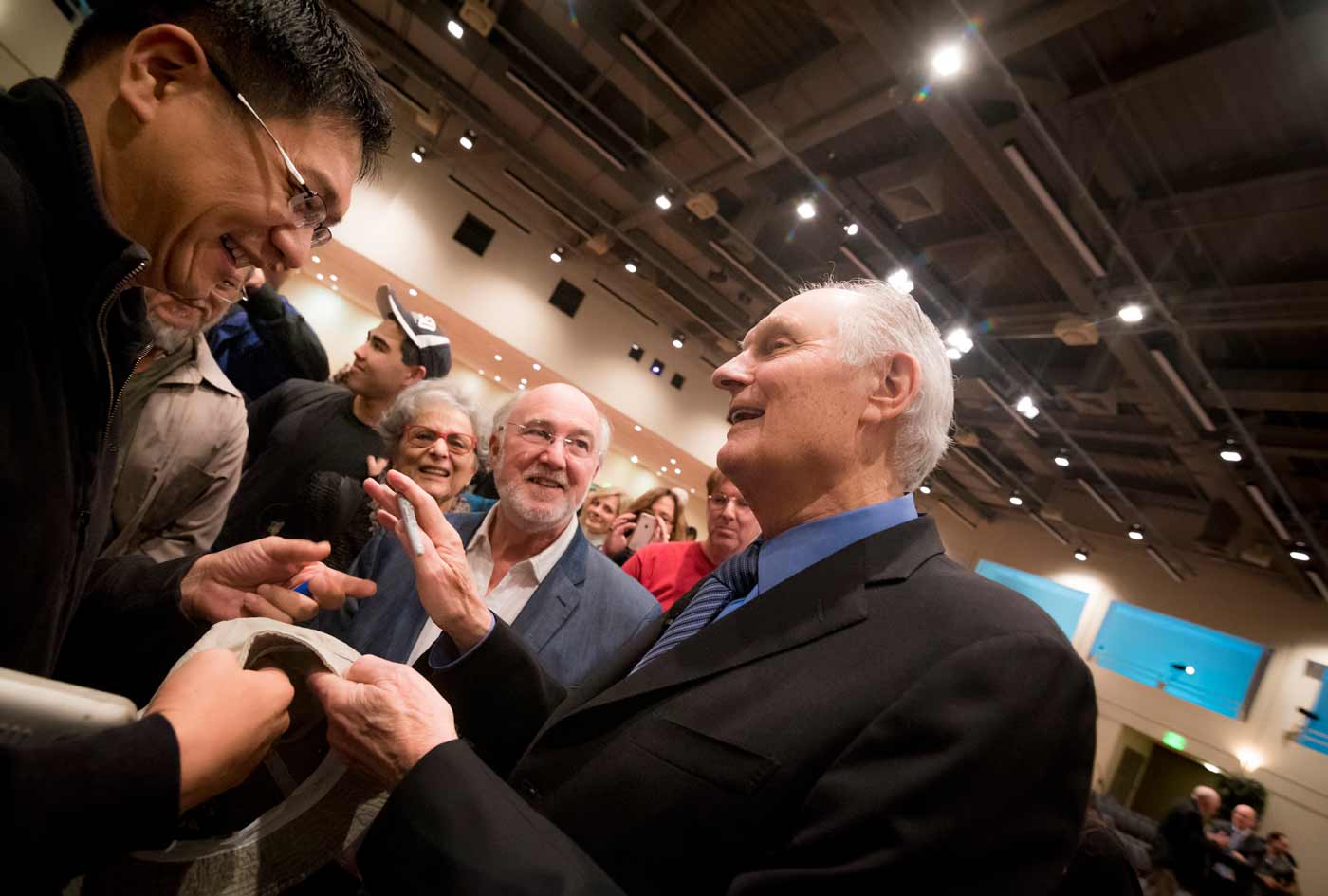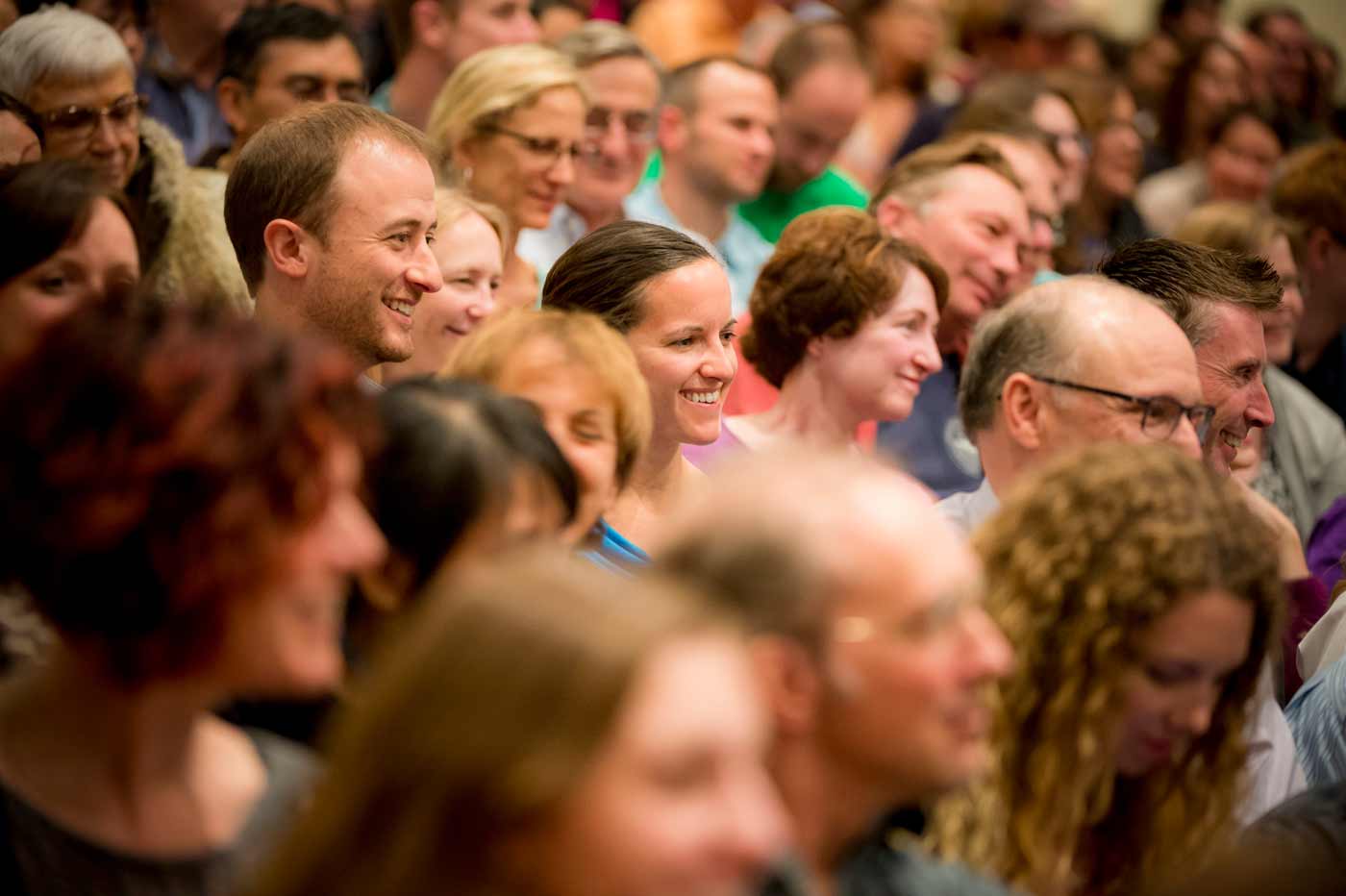By:
- Kim McDonald
Published Date
By:
- Kim McDonald
Share This:
A Blind Date with Science

Photos by Erik Jepsen/UC San Diego Publications
M*A*S*H actor Alan Alda shows scientists on campus a better way to communicate with the public
We’ve all seen them. The senior scientist with his back turned away from the audience, trying to explain a data-filled slide to a puzzled group of nonscientists that has long ago tuned him out. Or the junior professor, head down, reading a lecture word for word in a monotone voice from behind the podium.
It’s the bane of academe. Complex ideas in science need to be conveyed with precision. Yet most scientists also believe the public needs to understand the details, without personal opinions or emotion, so that people can draw their own conclusions based on facts.

Emmy Award-winning actor and director Alan Alda thinks that’s wrong. And he came to campus last week to convince senior administrators and young scientists to do it differently. Learn to develop an emotional connection to your audience, he urged, because that’s how you build trust with a public often fearful of scientists.
“Before we can communicate with the public I think we have to understand that there’s a serious problem here,” Alda said at a lecture that was followed by two days of workshops on campus designed to improve how scientists and research administrators communicate with the public. “And I think the problem is that the public is on a blind date with science. They’re not really comfortable with the other person in the room. On blind dates you have an uncomfortable relationship with this other person. What are they saying? What do they really mean when they are talking or when they’re sitting there? What’s going on? We’ve got to get past that discomfort between science and the public.”
Alda, best known for his portrayal as the army surgeon Hawkeye Pierce in the 1972 to 1983 television series M*A*S*H, is now a visiting professor at the Alan Alda Center for Communicating Science at Stony Brook University in New York. Established in 2009, the center is based on Alda’s belief that scientists could learn a thing or two from professional actors to more effectively communicate with the public. It’s been holding workshops at universities across the nation using the techniques used by actors to help them learn how to communicate more personally and directly.
That’s why more than three dozen UC San Diego science faculty, research administrators and postdoctoral research fellows were engaged in improvisational theater exercises and other sessions last week that forced them to play close attention to the body language and nonverbal cues of others, then to respond in kind. The workshops were sponsored by the Alan Alda Center for Communicating Science, Kavli Institute for Brain and Mind and the Kavli Foundation.

Alda himself demonstrated some of those techniques in an engaging, personal and humorous one-hour talk that left the standing-room-only gathering at the Price Center spellbound. Speaking without notes or props and making direct eye contact with his audience, he explained how he discovered while interviewing some 700 scientists for the PBS Series Scientific American Frontiers that not only does the language researchers use to communicate need to be “plain and simple,” but that body language is critical.
Are you looking at them or your notes? Do you have your back turned to your audience while reading off your PowerPoint? Are you speaking in a relaxed tone with an easy-to-follow cadence or are you rattling off your points with little regard for those who may not understand your terminology?
“We can’t just rat-tat-tat the bare facts and expect people to understand them,” Alda said, adding while interviewing scientists for his PBS show from 1993 to 2007, he was faced with researchers who simply didn’t know how to get their ideas across to intelligent lay people. That’s not good in a knowledge-based economy in which scientists have become increasingly important, but are often feared and distrusted by large segments of the public.

“As long as scientists are the priests in white coats who don’t speak our language, it’s a little easier not to believe them,” Alda explained. “We’ve got to get the same language going among us.”
And it’s not just the spoken and written word. Alda learned while interviewing scientists that his own body language was important in getting them to communicate successfully with him and equally critical in getting them to communicate successfully with the public. “The most important element was that I made contact with them and they had to make eye contact with me,” he said. “And I wouldn’t give up until I understood what they were saying.”
Alda pointed out that scientists need to realize that they are on a blind date with the public and that, as social animals, we’re programmed evolutionarily to pay greater attention to how people are speaking with their body language than what they’re actually saying. He said research studies show that the attraction between two individuals develops during the first seven minutes of their first meeting. And here’s the funny thing: 57 percent of the attraction reported by research subjects is based on body language, 38 percent on the tone of a person’s voice and only 7 percent on what a person actually says.
“If this is our hallmark, why would we ignore it” he said of body language. “Why wouldn’t we employ it?”
Alda reminded scientists in the audience that they are “suffering from a curse of knowledge” and that to reach the public they needed to find innovative ways to make an emotional connection to the public through body language, drama and other storytelling techniques. “I urge you to think of the things that can make your story dramatic,” he said.
But isn’t that antithetical to the way scientists are trained? one scientist asked.
“I certainly don’t want to cross a bridge that’s been built on emotion,” replied Alda to laughter. But his point is that doing science and talking to the public about science are two separate activities. The former can be dispassionate, but the latter needs to be closer to the way we as humans actually communicate. “That’s why we have to do these [improvisational] exercises,” he said, “because [emotion] has been trained out of scientists.”
Share This:
You May Also Like
Stay in the Know
Keep up with all the latest from UC San Diego. Subscribe to the newsletter today.



